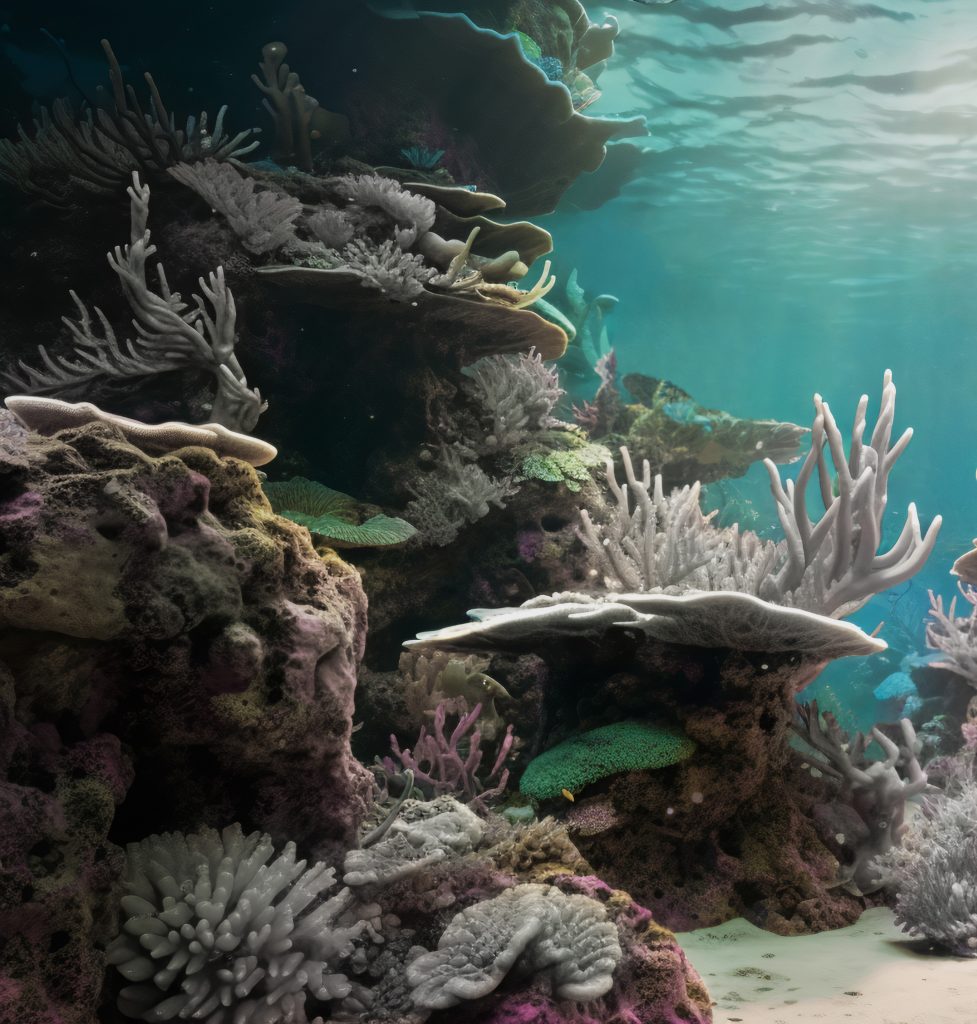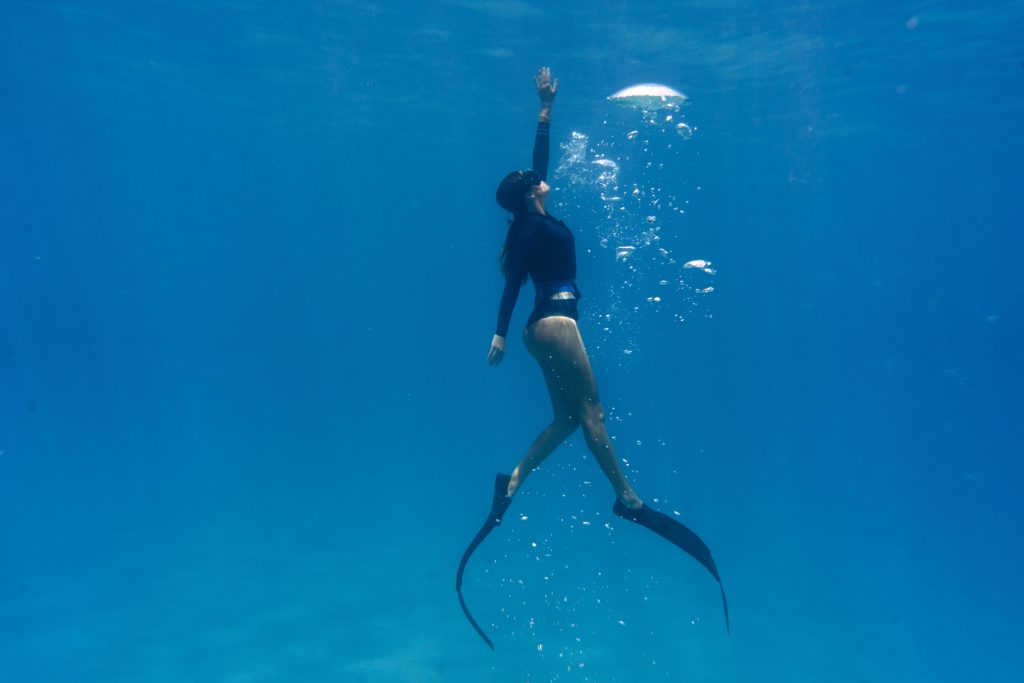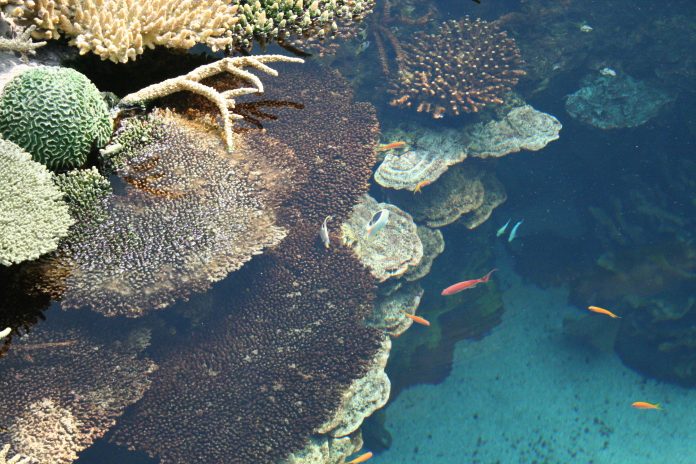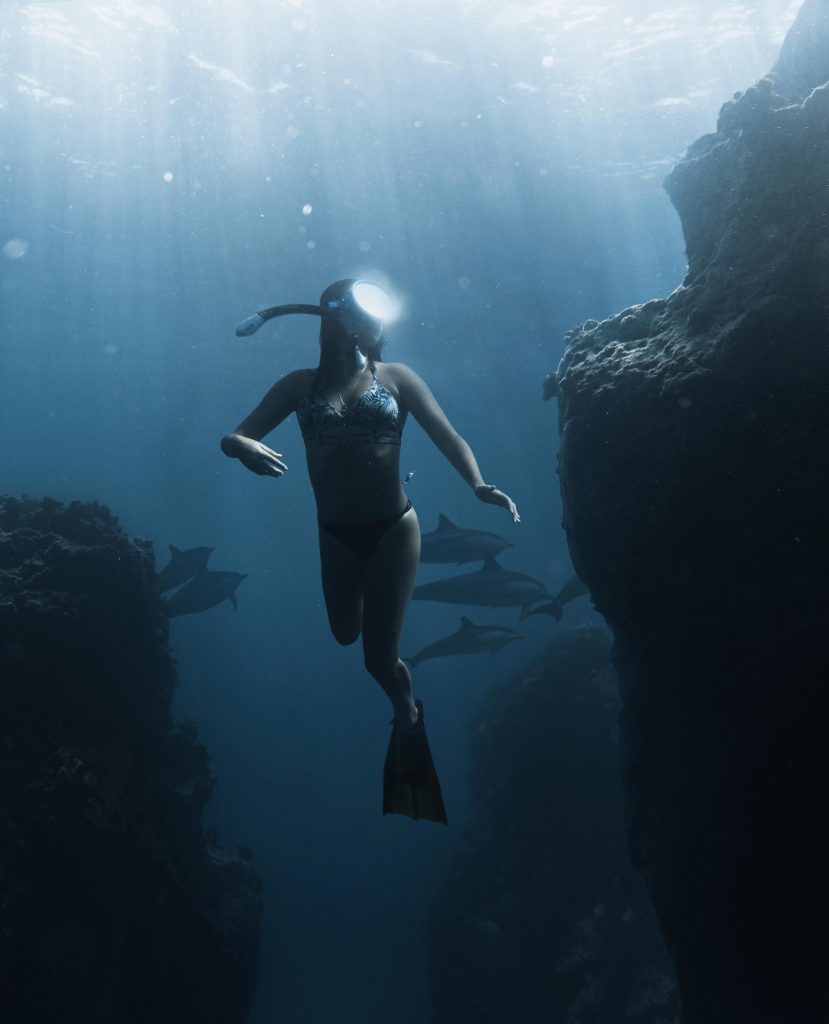Underwater Conditions
Underwater conditions have different effects on the diver’s mobility and visibility, depending on the equipment in use. The effects of different conditions are listed below:
(a) General:
Generally, a booted diver is affected more by the seabed conditions and less by currents than a diver working on or near the seabed using fins.
Rock.
Rock may be smooth or jagged. The diver can usually move around fairly easily, but they must take care that their lines and hoses are not caught up on protruding rock. Confronted by an obstruction, the diver should go over rather than around it. Gloves should be worn if the rocks are sharp.
Coral.
Coral makes a solid but jagged bottom, and although the diver can move around without difficulty, they ought to wear gloves to avoid the painful cuts they could easily incur, particularly from some of the poisonous corals. Otherwise, precautions are as for rocks.
Gravel and Sand.
Gravel and sand generally provide a smooth flat surface, easy movement, and good visibility for the diver.
Shell.
Shell is generally mixed with sand or mud. With a sand mixture, movement is easy and visibility is not impaired. With a mud mixture, the diver’s movement becomes more difficult and their visibility is decreased with any increase in the proportion of mud to shell.
Mud.
Mud is the worst type of bottom. A booted diver usually finds movement difficult and the sediment they stir up soon decreases their visibility. They should, therefore, be placed as near as possible to the job and, if possible, should orientate themselves so that any current takes the silt away from their work. The self-contained swimmer enjoys the distinct advantage of being able to move around without touching the bottom, but even so, there is often a good deal of silt and poor visibility close to a mud bottom, even when the bottom has not been stirred up by the diver’s movements.

Visibility Underwater.
Underwater visibility varies with locality, general water conditions, and the nature of the bottom; in tropical waters, it is often possible to see up to 100 m. Channel and harbor areas are generally turbid owing to sediment-laden rivers emptying into them and ships and strong currents stirring up the bottom; visibility is often zero and seldom more than 5 to 7 m.
High Water Temperature.
As a diver’s body cannot be cooled by sweating, it is extremely sensitive to high underwater temperatures. Heat prostration may be expected in water temperatures above 30°C if the diver is working and in water temperatures above 35°C even when at rest. There is, unfortunately, no diving equipment at present that will protect the diver from heat, although a hot water suit supplied with cooled water might be effective if this is practicable.

(b) Low Water Temperature:
(1) Protective measures can and must be taken in cold water, as an appreciable fall in body temperature is likely to occur. In extreme cases, this may lead to loss of consciousness. Longer-term Non-Freezing Cold Injuries (NFCI) may also occur.
(2) The precautions and protective measures required are as follows:
(a) Divers must understand the hazards of cold water diving.
(b) Divers should be adequately protected from the cold, either by the use of hot water suits or by a well-fitting dry suit with plenty of warm clothing, particular attention being paid to the effectiveness of neck and wrist seals.
(c) Adequate arrangements must be made for re-warming any diver who may be suffering from cold exposure.
(3) Supervisors are to use the most appropriate means available to them to ascertain the water temperature where the diver is going to spend the majority of the dive undertaking low-intensity work. As a minimum, this is to be ascertained using an in-service depth gauge, including a thermometer, or any other means of accurately recording temperature, lowered to a depth of 3m within the maximum depth the diver is expected to operate at.
(4) When the water temperature is below 3°C the equipment, particularly the reducing valve (and demand valve if applicable), should be prepared and tested in a warm place and kept warm until required for use. This preparation should, if practicable, include drying the reducing valve (and demand valve) completely using warm air, thus ensuring there is no moisture in the valve(s) to freeze and cause malfunctioning. When required for pre-dive testing or the dive, the set must be transferred from the warm environment to the water with the minimum delay and it must NOT be used in air where practicable.
(5) Further guidance on Low Water Temperature is as follows:
(a) Diver Abort/Recovery. The diver is to abort the dive in the following circumstances:
Partial or full flooding of a dry suit system
- Loss of core body temperature – onset of shivering
- Cooling of the extremities – onset of numbness and/or loss of grip strength
[Note: If the diver has a decompression burden this should be completed before recovery of the diver, when diving in cold water consideration should be given to having an RCC on site and using Surface Decompression.
(b) Before returning a diver to the water they are to be thoroughly rewarmed paying particular attention to the extremities.
Core body temperature – shivering is to have ceased
Extremities:
Return of sensation.
And
Return of hand function.
And
Return of grip strength.
In the case of flooding, dry suits are to be provided.
As a guide, for each minute spent in cold water the diver should be rewarmed for a similar period before commencing the next dive. If sensation, hand function, and grip strength do not return within this time the diver should be referred to a suitable qualified medical officer before returning to diving.
(c) Tides and Currents:
(1) Tide is the vertical movement of water due to the gravitational pull of the sun and moon. Tides create currents which are the horizontal movement of water near the coast. Currents are also caused by water that has been carried ashore by waves and is returning seaward (rip currents). It is most advisable to obtain as much information as possible about tides and currents in the area of the operation, for this information may be used not only to assist the diver or swimmer but also to warn them of the limits of their ability to operate. It may even dissuade them from operating at all.
(2) When obtaining this information bear in mind that tide tables show only surface movements, whereas both the direction and speed of the current may vary with depth, tide, and bottom configuration. The maximum speed of the current need not occur at the surface.
(3) The strongest currents in which an unaided diver can work on the seabed are as follows:
(a) 0.5 knot. Easy movement in any direction.
(b) 1 knot. Movement up tide or across tide on a jackstay. (Water moving 10 m in 20 seconds is flowing at approx. 1 knot).
(c) 1.5 knots. Controlled movement down tide on a jackstay.
(d) 2 knots. Work only in the lee of an obstruction.
(4) Waves. In deep water, the motion of the water caused by surface waves diminishes rapidly with depth, so that at a depth of half the wavelength (the distance between consecutive wave crests) a diver can barely feel the motion of the waves. For example, if the wavelength is 40 m then the water will be almost still at a depth of 20 m. In shallow water, the motion diminishes less rapidly with depth
Conclusion:
“The article provides comprehensive insights into the complexities of underwater conditions and their impact on divers. By highlighting various factors such as seabed conditions, visibility, water temperature, and tidal currents, it offers valuable guidance for divers to navigate safely in different environments. The detailed descriptions and practical recommendations underscore the importance of understanding and adapting to underwater challenges, ensuring both safety and efficiency in diving operations.”



